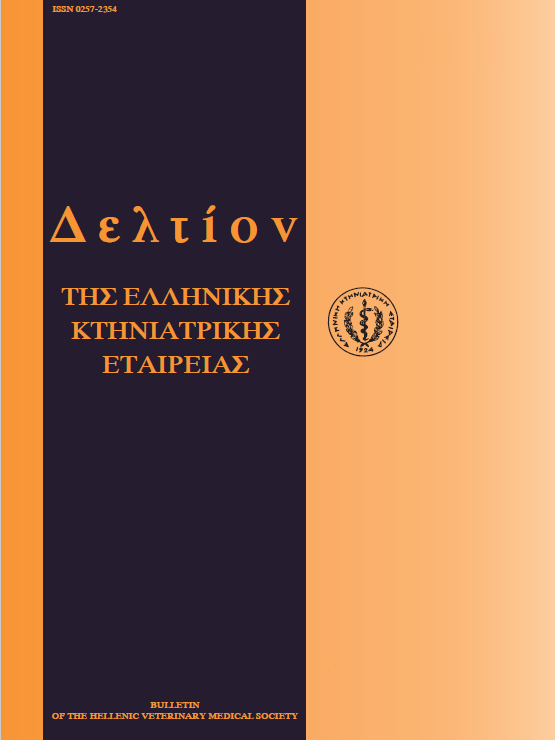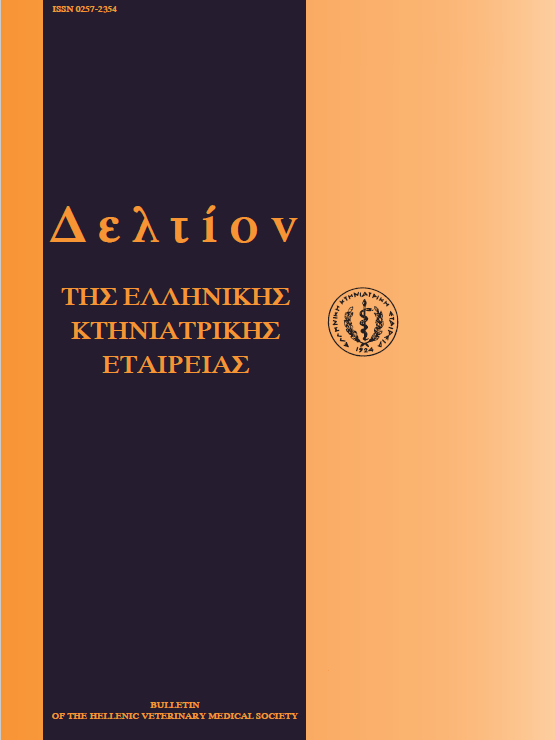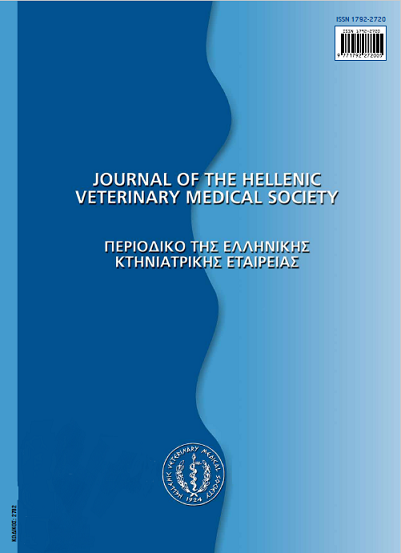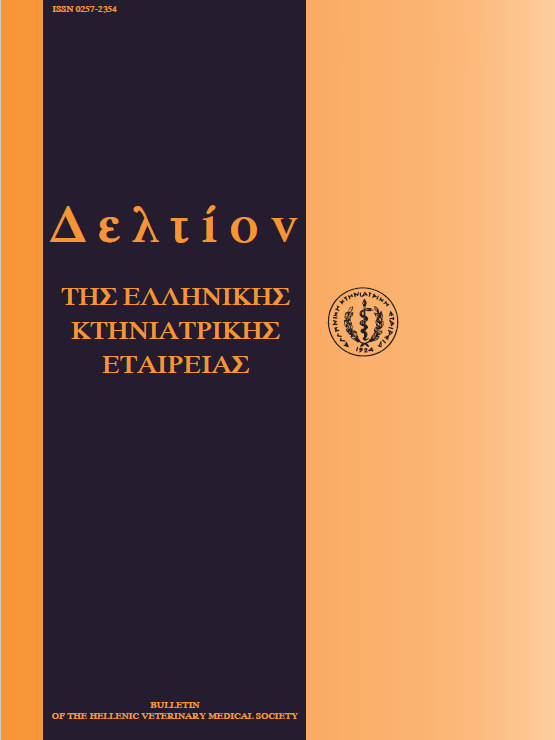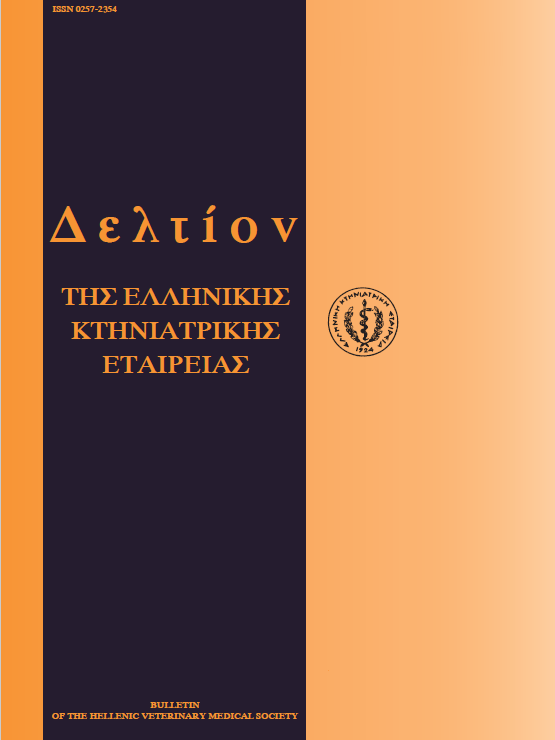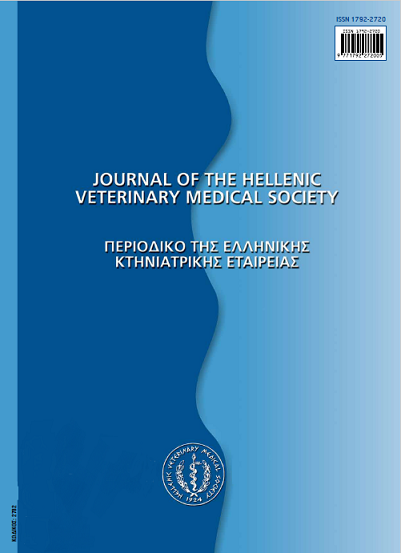Νόσος του Aujeszky (Ψευδολυσσα). Μια παλιά απειλή για τη σύγχρονη χοιροτροφία; Μέρος Π. Επιδημιολογία, ανοσία, πρόληψη και η τρέχουσα κατάσταση στην Ελλάδα
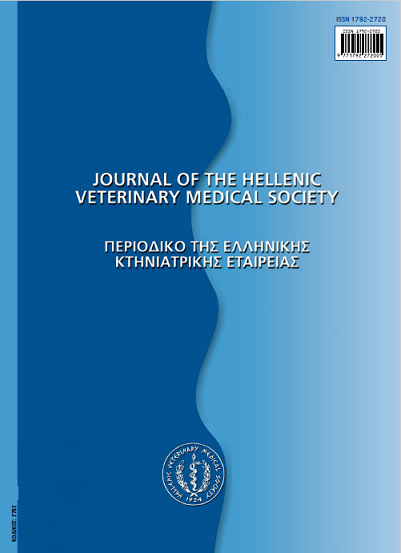
Περίληψη
Η νόσος του Aujeszky είναι μια σοβαρή ιογενής νόσος του χοίρου η οποία για πρώτη φορά περιγράφηκε το1813 στα βοοειδή. Η νόσος του Aujeszky παρουσιάζει παγκόσμια εξάπλωση, αν και έχει εκριζωθεί από αρκετές αναπτυγμένες χώρες όπως είναι η Γερμανία, η Αυστρία, η Σουηδία, η Ολλανδία, η Δανία, το Βέλγιο και το Ηνωμένο Βασίλειο. Στην Ελλάδα,η νόσος εμφανίζεται ενδημική και παρά το γεγονός ότι ο ιός δεν προκαλεί σοβαρά προβλήματα στις κτηνοτροφικές μονάδεςτα τελευταία 20 χρόνια. Δυστυχώς, όμως, η διακοπή των εμβολιασμών ως αποτέλεσμα της πρόσφατης οικονομικής κρίσης,έχει επαναφέρει το πρόβλημα της νόσου ξανά στο προσκήνιο. Ο χοίρος είναι φυσικός ξενιστής του ιοΰ και μπορεί να επιβιώσειμετά από προσβολή. Η μετάδοση του γίνεται κυρίως με κοντινή επαφή, ωστόσο αρκετοί άλλοι τρόποι ενοχοποιούνται. Τόσοη χυμική όσο και η κυτταρική ανοσία ενεργοποιούνται κατά τη μόλυνση με τον ιό, ενώ η μητρική ανοσία μπορεί να παρέχειαποτελεσματική προστασία στα χοιρίδια, πάντα σε σχέση με τα επίπεδα της και το λοιμογόνο στέλεχος. Οι γλυκοπρωτεϊνεςτου ιού παίζουν, επίσης, ρόλο στην ανοσία με κυριότερο αυτό των gC και gD. Η πρόληψη και ο έλεγχος της νόσου βασίζεταιστους τακτικούς εμβολιασμούς και σε μέτρα βιοασφάλειας, ενώ η εκρίζωση της έγινε με διάφορους τρόπους ανάλογα με τηνκατάσταση στην περιοχή. Η ανοσοποίηση του χοίρου απέναντι στον ιό μπορεί να επιτευχθεί με τη χρησιμοποίηση ελαττωμένηςλοιμογόνου δύναμης ζωντανών ή αδρανοποιημένων εμβολίων. Η ανάπτυξη της γενετικής μηχανικής οδήγησε στην Παρασκευήεμβολίων, τα οποία αποτελούν σημαντικό όπλο για την αντιμετώπιση και τον έλεγχο της νόσου. Σε ό,τι αφορά την Ελλάδα,παρουσιάζεται ένα σύντομο ιστορικό και συζητείται η πιθανότητα εκρίζωσης του νοσήματος.
Λεπτομέρειες άρθρου
- Πώς να δημιουργήσετε Αναφορές
-
PAPAGEORGIOU (Κ.Β. ΠΑΠΑΓΕΩΡΓΙΟΥ) K. V., BURRIEL, A. R., FILIOUSSIS (Γ. ΦΙΛΙΟΥΣΗΣ) G., CHRISTODOULOPOULOS (Γ. ΧΡΙΣΤΟΔΟΥΛΟΠΟΥΛΟΣ) G., NAUWYNCK, H. J., & KRITAS (Σ.Κ. ΚΡΗΤΑΣ) S. K. (2017). Νόσος του Aujeszky (Ψευδολυσσα). Μια παλιά απειλή για τη σύγχρονη χοιροτροφία; Μέρος Π. Επιδημιολογία, ανοσία, πρόληψη και η τρέχουσα κατάσταση στην Ελλάδα. Περιοδικό της Ελληνικής Κτηνιατρικής Εταιρείας, 62(2), 125–131. https://doi.org/10.12681/jhvms.14841
- Τεύχος
- Τόμ. 62 Αρ. 2 (2011)
- Ενότητα
- Review Articles
Οι συγγραφείς των άρθρων που δημοσιεύονται στο περιοδικό διατηρούν τα δικαιώματα πνευματικής ιδιοκτησίας επί των άρθρων τους, δίνοντας στο περιοδικό το δικαίωμα της πρώτης δημοσίευσης.
Άρθρα που δημοσιεύονται στο περιοδικό διατίθενται με άδεια Creative Commons 4.0 Non Commercial και σύμφωνα με την άδεια μπορούν να χρησιμοποιούνται ελεύθερα, με αναφορά στο/στη συγγραφέα και στην πρώτη δημοσίευση για μη κερδοσκοπικούς σκοπούς.
Οι συγγραφείς μπορούν να καταθέσουν το άρθρο σε ιδρυματικό ή άλλο αποθετήριο ή/και να το δημοσιεύσουν σε άλλη έκδοση, με υποχρεωτική την αναφορά πρώτης δημοσίευσης στο J Hellenic Vet Med Soc
Οι συγγραφείς ενθαρρύνονται να καταθέσουν σε αποθετήριο ή να δημοσιεύσουν την εργασία τους στο διαδίκτυο πριν ή κατά τη διαδικασία υποβολής και αξιολόγησής της.




